16 Effective Home Workouts to Stay in Shape (No Weights Needed)
.webp)
Key Takeways
You don’t have to go to the gym or spend hundreds on fancy equipment to stay in shape. As many of us learned during the Covid-19 pandemic, home workouts can be a manageable and affordable alternative!
Most workout plans require common gym equipment like dumbbells, kettlebells, resistance bands, or even a barbell. But there are lots of bodyweight exercises that can easily be done at home, and since no equipment is required, you can do them from the comfort of your own living room.
Here are 16 beginner-friendly exercises that can help you incorporate cardio, strengthen your core, and improve your upper and lower body strength.
How Long Should My Home Workout Be?
How long your workout will be can depend on your specific fitness goals. Are you trying to build muscle strength, lose weight, improve your overall cardiovascular health, reduce the risk of chronic disease, or a mix of all of the above?
Your objective and current fitness level will determine the length and intensity of your home workout. If you are a beginner, you should start gradually and take it slowly. You can always build to a more intense workout as your strength and endurance increases, so don’t rush it.
If you’re not sure where to begin, working with a certified personal trainer or fitness instructor can help guide you through setting goals, maintaining proper form, and creating a sustainable home workout routine. A dietitian who specializes in sports nutrition can also be a wonderful resource for helping you fuel properly to get the most from your workouts.
Now, let's explore some different types of home workouts to try.
Cardio Workouts
.webp)
The Physical Activity Guidelines for Americans suggest at least 150 minutes per week of moderate-intensity aerobic activity per week, which includes cardio workouts. Cardio workouts raise your heart rate and increase your body’s use of oxygen.
Benefits of Cardio Workouts
Cardio workouts have many health benefits. Here are just a few:
- May help your body burn calories, aiding in healthy weight management.
- Can improve cardiovascular health.
- May benefit mental health, relieving symptoms of depression, improving body image, and helping you cope with stress.
- Can lead to better sleep.
- Can help support healthy blood sugar levels
1) Jumping Jacks

Jumping jacks are a simple cardio workout that gets your heart rate up and moves your whole body. Jumping jacks are a type of plyometric exercise, which involve jumping or explosive movements. To do jumping jacks:
- Stand upright with your legs together and your arms at your sides.
- Bend your knees slightly and jump while spreading your legs and stretching your arms out over your head.
- Then, jump back into the starting position and repeat.
If you are new to jumping jacks, try starting with a daily set of 10 as a warm up movement and increase the number once you feel comfortable.
2) Burpees
A burpee is a high-intensity, continuous-movement exercise that works your whole body. It’s a combination of cardio and strength training that incorporates squats, planks, and jumping. To do a burpee:
- Begin with your knees bent in a squat position with your back straight and your feet shoulder-width apart.
- Place your hands on the floor between your feet.
- Kick your legs back into a plank position, bend your elbows, and do a pushup.
- Rise back into a plank and jump your legs forward back into the starting squat position.
- From the squat position, jump into the air with your hands above your head.
- Land from the jump with your knees bent, and return to the squat position and restart the process.
How many burpees you are able to do will depend on your fitness level. If you’re completely new to burpees, try starting with just one, and working up from there. When you feel you can, try to do three sets of 10 at a moderate pace.
3) High Knees

High knees are a fast-paced cardio exercise that works your leg muscles, engages your core, and gets your heart rate up. To do high knees:
- Start with your feet hip-width apart and arms at your sides.
- Lift your right knee up to your chest, then quickly lower your knee and repeat with the other knee.
- Repeat, alternate your knees at a quick pace.
If you’re new to high knees, take it slow. Begin with four sets of 30 seconds of high knees, resting 30 seconds between sets, and gradually increase from there.
4) Climbing Stairs
When you climb stairs, your legs are repeatedly lifting your body while resisting gravity, which places a higher demand on your muscles and makes for a great cardio exercise. Studies show that even brief bouts of stair climbing can improve cardiorespiratory fitness and benefit cardiovascular health.
You can use a staircase in your own home, at work, or even in a public place like a park or parking garage. Start with just 10 minutes of stair climbing, and gradually increase the time as you build endurance.
Upper Body Workouts
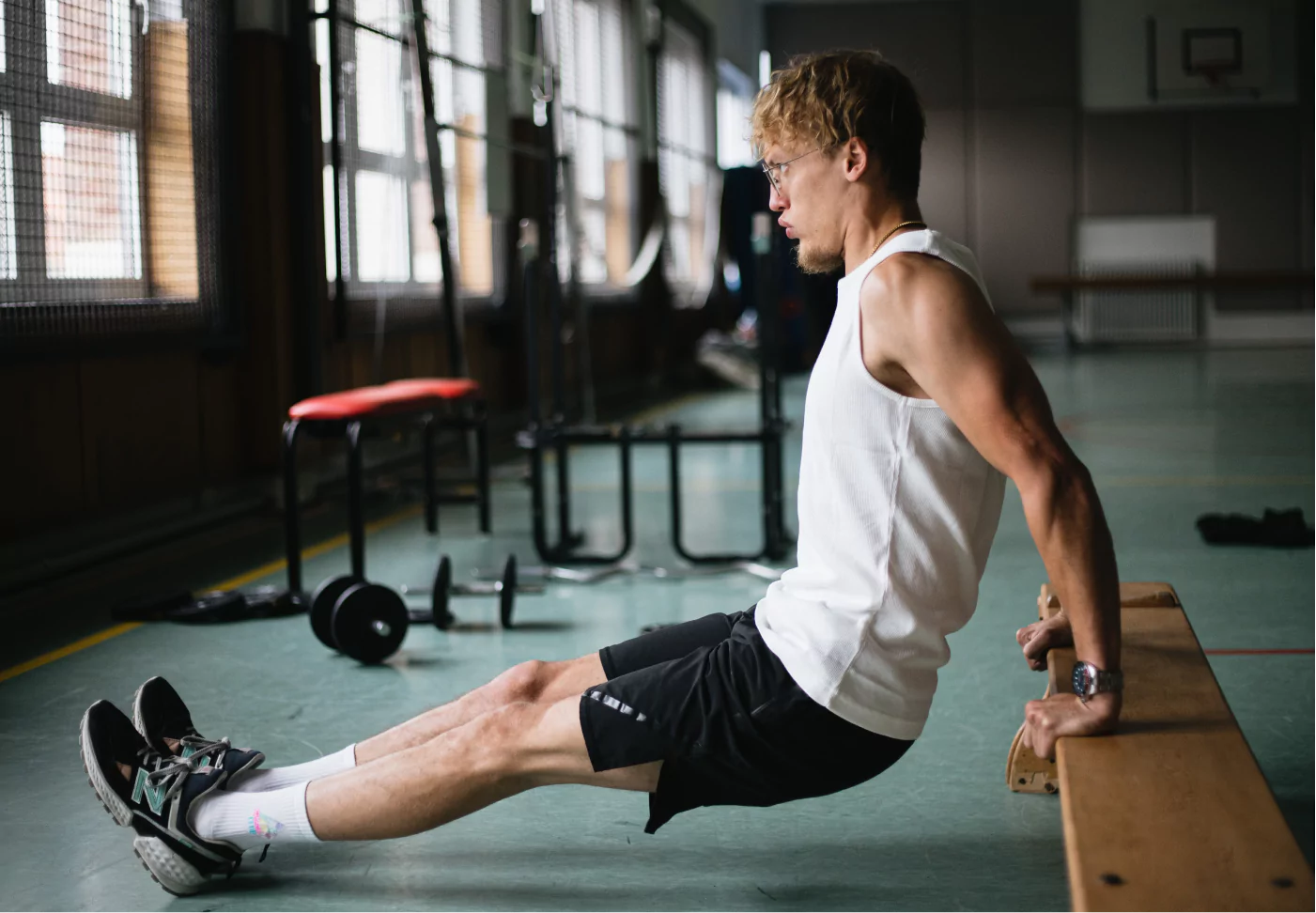
Aside from cardio, the Physical Activity Guidelines for Americans suggests at least two days per week of muscle building activity, which can include upper body workouts. Upper body workouts target the muscles in your upper body, which includes your arms, forearms, shoulder, back, and chest.
Benefits of Upper Body Workouts
Here are some benefits of upper body workouts:
- Can strengthen your muscles can help you perform daily activities.
- Can increase your muscle mass and boost your metabolic rate, helping you burn more calories more efficiently.
- May help increase muscle, bone, and tissue strength, thereby reducing the risk of injury.
5) Push-Ups

Push-ups are an upper body exercise that builds endurance, enhances muscle development, and increases core strength. This exercise works the muscles in your chest, shoulders, arms, and abdominals.To try push-ups:
- Begin on all fours on the floor, and keeping your elbows slightly bent, extend your back legs out into a plank position.
- Slowly bend your elbows and lower your body to the floor, until your elbows are at a 90-degree angle.
- Push your body back up to the plank position, and repeat.
There are lots of variations of push-ups, and beginners may even want to try knee push-ups, which are similar to a regular push-up, but performed on the knees instead of the toes.
If you’re new to push-ups, start with five to 10 repetitions. As your endurance increases, try increasing to two to three sets of 10 push-ups each.
6) Tricep Dips
The triceps are a large, thick muscle on the back of the upper arm. Their main function is to bend the arm at the elbow. Tricep dips are an exercise that benefits these important muscles. To do a tricep dip:
- Place your hands behind you on a steady chair or weight bench, with your legs extended.
- Lower yourself until your elbow is bent, ideally somewhere between a 45 degree and 90 degree angle.
- Slowly push your body back up until your arms are straight, without locking your elbows and repeat.
If you are a beginner, start with just a few tricep dips. Gradually work your way up to two to three sets of 10 repetitions.
7) Superman
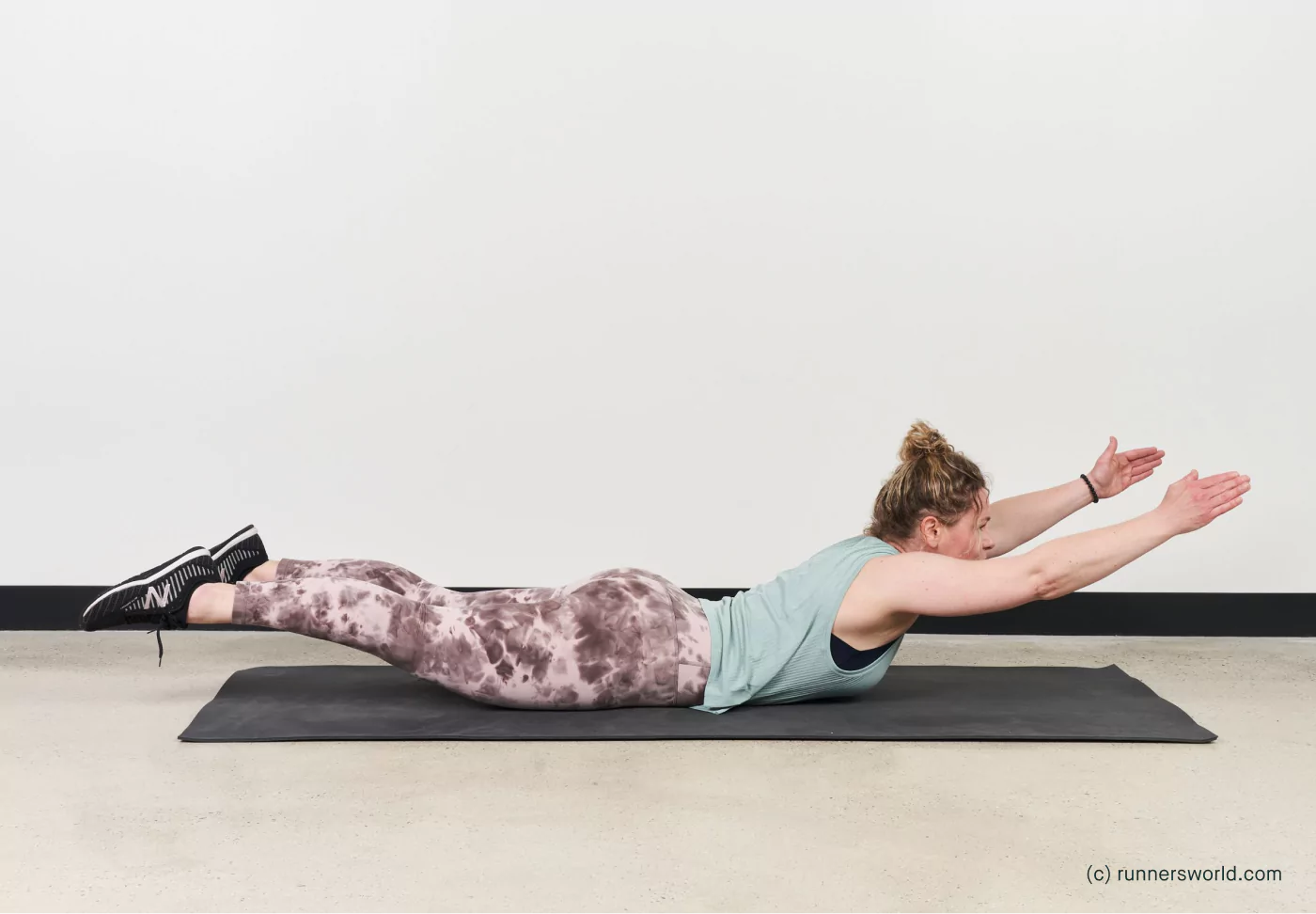
The superman is an exercise that targets the back muscles, abs, glutes, and hamstrings. The superman works your lumbar multifidus, a stabilizing muscle along the lower spine which can strengthen this area and even reduce lower back pain. To do a superman:
- Lie facedown on the floor with your legs straight behind your and your arms extended in front of you
- Without looking up, slowly lift your arms and legs off the floor as far as is comfortable for you and hold the position for two seconds.
- Lower your arms and legs back to the floor and repeat
If you’re new to this exercise, start out doing just one set of five reps and gradually work your way up to two to three sets of 10.
Lower Body Workouts
Lower body workouts target the muscles and joints in your lower body, which includes the lower back, hips, glutes, quads, and calves. Without free weights or other equipment, these exercises are generally low-impact and can be combined with upper body exercises for a full body workout.
Benefits of Lower Body Workouts
Lower body workouts have many benefits, including:
- May help manage or improve lower back pain.
- May increase joint health and help manage conditions like osteoarthritis.
- Can improve muscle strength, overall fitness, and metabolism in older people.
8) Squats

Squats are a lower body exercise that work your quads, glutes, back and spine muscles, inner thigh muscles, calves, and abs. To try a bodyweight squat:
- Stand with your toes facing forward and your feet a little wider than hip-width apart.
- Driving your hips back and bend at the knees while keeping your heels and toes on the ground.
- Press into your heels and straighten your legs, returning to an upright, standing position.
If you’re new to squats, try doing just one set of five and work your way up to three sets of 10-20 repetitions.
9) Lunges
Lunges are an exercise that increase your hip and knee extensor muscle strength. To try lunges:
- Stand with both legs straight, and your feet staggered, with your right foot about two feet in front of your left.
- Bend your knees and lower your body straight down until your back knee is a few inches from the floor and your front thigh is parallel to the ground.
- With your weight on the heel of your front foot, push back up to the starting position and repeat with your left foot in front and your right foot behind.
If you’re new to lunges, start with a set of 10 lunges on each side and gradually increase as you build endurance.
10) Calf-Raises
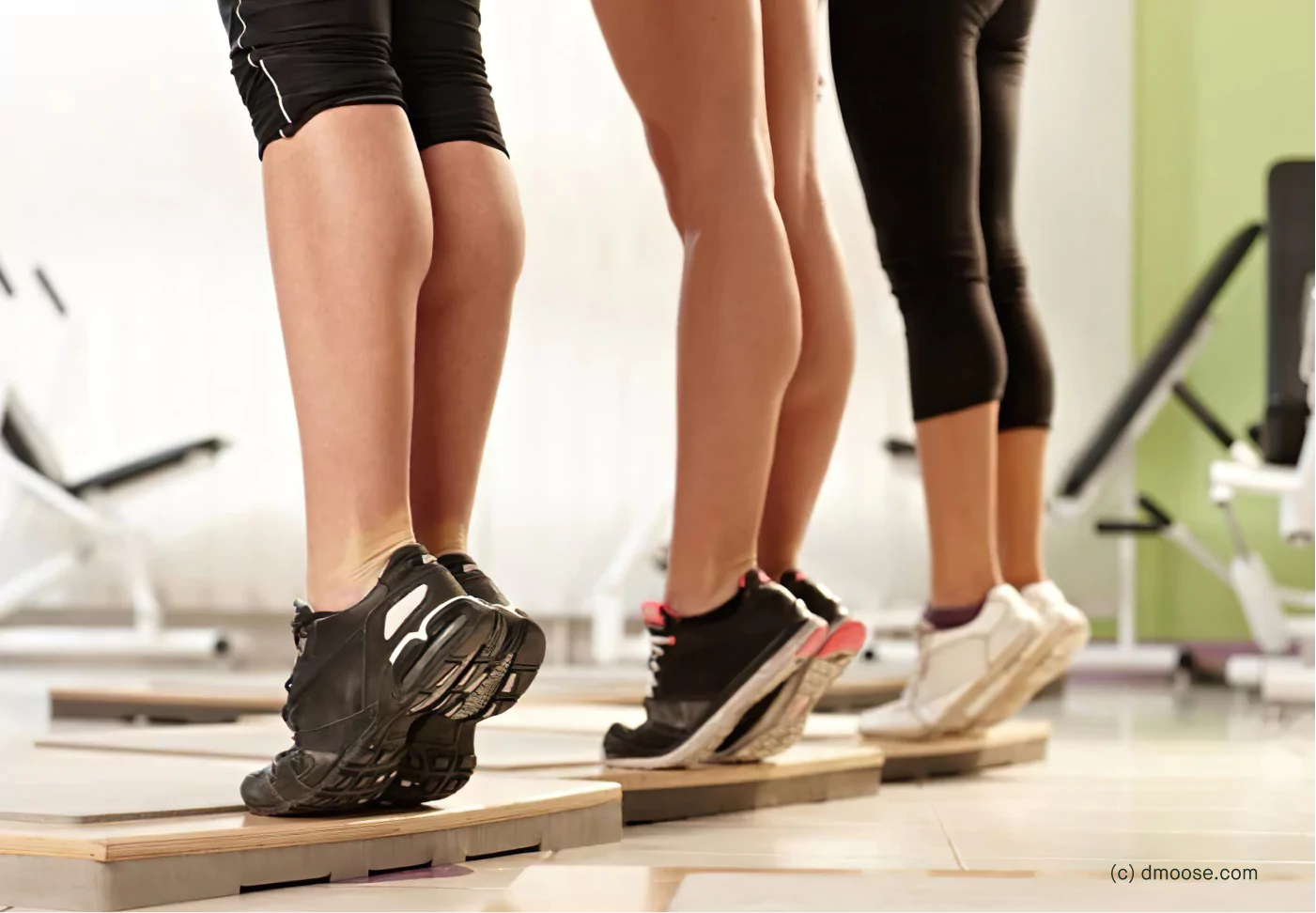
Standing calf-raises gives you the opportunity to work your calf muscles, which are rarely worked in other exercises. To try calf-raises:
- Stand on the floor or an exercise mat with your back straight, your shoulders down, your toes pointing forward, and your feet shoulder-width apart.
- Slowly raise your heels off the floor, keeping the legs straight, until you are on the tips of your toes.
- Slowly lower your heels back to ground, returning to the starting position, and repeat-
If you’re new to calf-raises, try to complete just 10 and work up to 20 to 30.
11) Jump Squats
Jump squats have been shown to improve strength, range of motion, speed, explosive strength, and dynamic balance. To do a jump squat:
- Stand with your hands by your side and feet slightly wider than shoulder-width.
- Lower your body into a squat, lowering until your thighs are parallel to the floor.
- From the lowest point in the squat, push up into the balls of your feet and extend your legs to jump off the floor.
- Land softly with your knees bent, lowering back into the squat position and repeat.
If you’re new to jump squats, start with two sets of five repetitions. Gradually, you can work your way up to more sets of 10-15 repetitions.
12) Glute Bridges
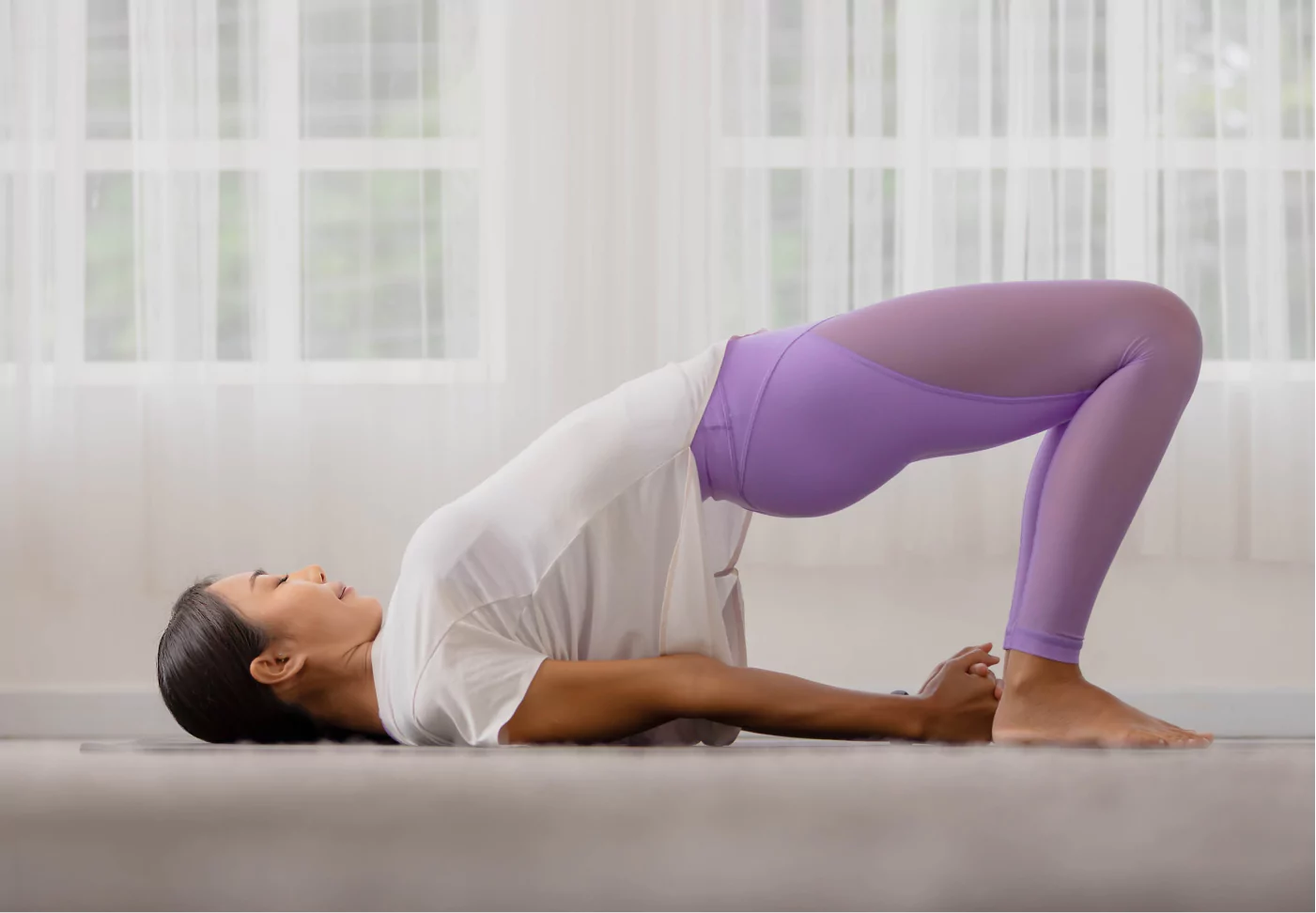
Glute bridges are an exercise that helps build core stability and builds glute strength. To try a glute bridge:
- Lie face up with your knees bent, your arms at your side with palms facing the ceiling, your feet flat on the floor.
- Push through your heels and lift your hips off the floor until your body forms a straight line from shoulder to knees.
- Slowly lower your hips back to the starting position and repeat.
If you’re new to glute bridges, try just one set of 10 repetitions and work up to three sets of 10.
Core Workouts
Core exercises are an important part of a versatile workout routine. Your core includes your pelvis, lower back, hips, and the muscles in your abdomen, which are often called abs or abdominals.
Benefits of Core Workouts
Ab workouts have many benefits, including:
- Improving your balance and stability.
- Improving chronic lower back pain.
- Improving your posture.
13) Sit-Ups
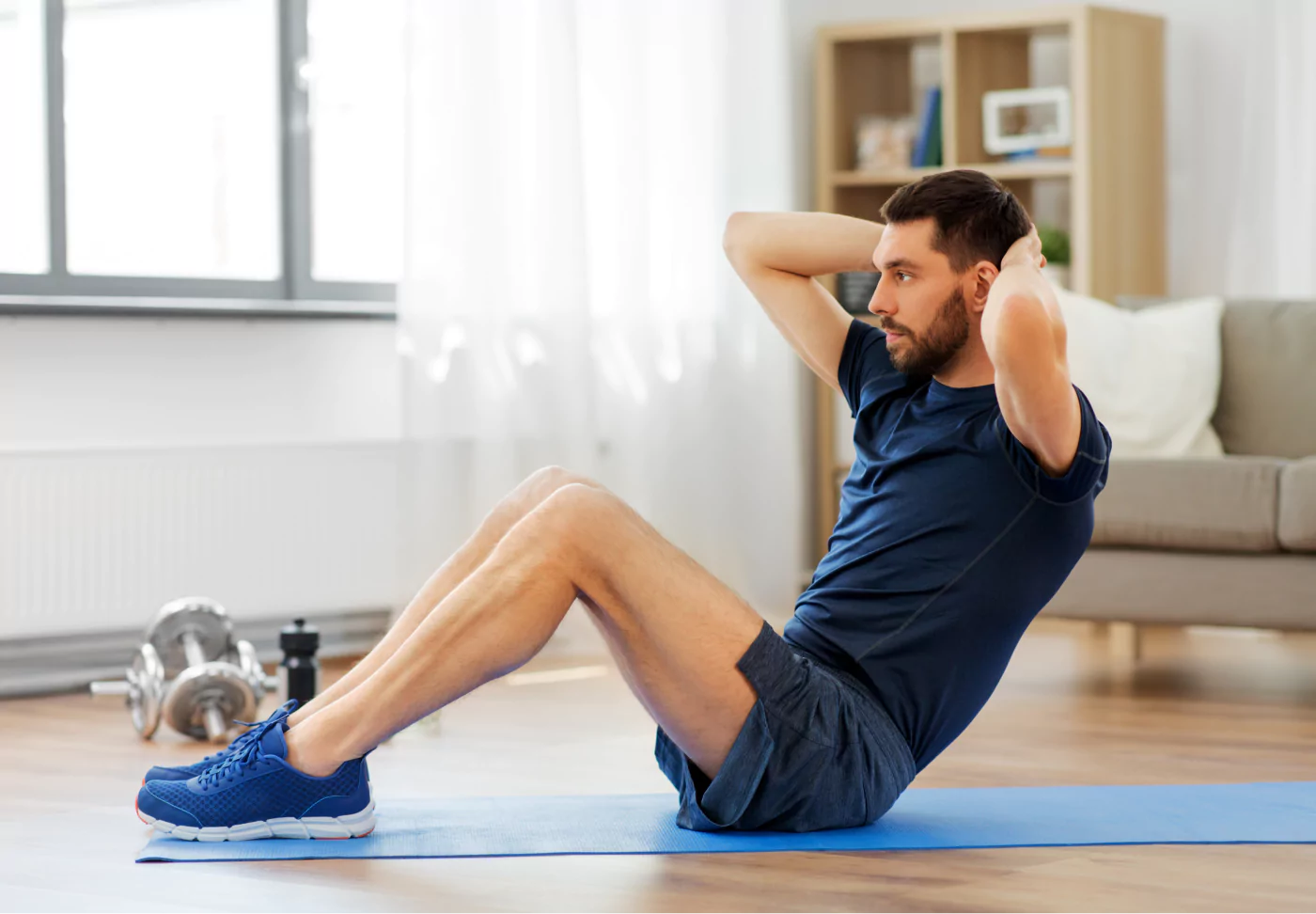
Sit-ups are a classic core workout that works your abdominal muscles. It can also improve your spinal flexibility. To try a sit up:
- Lie face-up on the floor with your feet planted on the floor and with your arms crossed over your chest.
- Engage your core by drawing your navel toward the spine and lifting your back off the ground until you are sitting all the way up.
- Slowly, lower your body back to the starting position and repeat.
Beginners should try starting with one set of five to 10 sit-ups, gradually building to three sets of 12 repetitions.
14) Planks
A plank is a core workout that works your abdominals and lumbar, or lower back, muscles. To try a plank:
- Start face down with your forearms on the ground and your legs out behind you and your torso lifted so that you are parallel to the ground.
- Engage your core by drawing your navel toward your spine so that your body is in a straight line from your ears to your toes.
- Hold this position for at least 10 seconds and up to a full minute if you are more advanced.
Some people hold a plank for a certain amount of time, while others prefer to do smaller repetitions with breaks in between. You can try holding your plank for 10 seconds, and building to 30, 45, or 60 second planks. Or, you can do three to five sets of 10 to 15 second planks.
15) Russian Twists

A Russian twist is a core exercise that works your abdominal and shoulder muscles. To try a russian twist:
- Sit on the floor with your legs in front of you and knees bent.
- Lean your torso back and lift your feet from the floor, so that your body creates a V shape.
- Keeping your legs stationary and holding your hands together, twist your torso to the right, then back to center, then to the left.
If you’re new to Russian twists, start with one set of five reps and build up to three sets of 10 to 15 repetitions.
16) Bicycle Crunches
Bicycle crunches engage your abs, particularly the obliques and the rectus abdominis. To try a bicycle crunch:
- Lie flat on the floor with your knees bent, your lower back pressed to the ground, and your hands gently behind the head.
- Engage your core and slowly raise your knees to about a 90 degree angle, lifting your feet from the floor.
- Slowly bring one knee up toward your armpit while straightening the other leg, and lift your torso and rotate so that your elbow touches the opposite knee.
- Alternate to twist to the other side and repeat.
If you’re new to bicycle crunches, start with just one set of 10 repetitions for each side and work up to three sets of 12 to 20 repetitions.
Find the right Nutrisense programto turn insight into progress.
Go Beyond Glucose Data with Nutrisense
Your glucose can significantly impact how your body feels and functions. That’s why stable levels are an important factor in supporting overall wellbeing. But viewing glucose isn't enough. Nutrisense, you’ll be able to learn how to use your body's data to make informed lifestyle choices that support healthy living.
One-to-one coaching
Sign up to access insurance-covered video calls to work with a glucose expert: a personal registered dietitian or certified nutritionist who will help tailor your lifestyle and diet to your goals.
Monitor and measure what matters
With the Nutrisense CGM Program, you can monitor your glucose with health tech like glucose biosensors and continuous glucose monitor (CGM)s, and analyze the trends over time with the Nutrisense App. This will help you make the most informed choices about the foods you consume and their impact on your health.
Find your best fit
Ready to take the first step? Start with our quiz to find the right Nutrisense program to help you take control.

Heather is a Registered and Licensed Dietitian Nutritionist (RDN, LDN), subject matter expert, and technical writer, with a master's degree in nutrition science from Bastyr University. She has a specialty in neuroendocrinology and has been working in the field of nutrition—including nutrition research, education, medical writing, and clinical integrative and functional nutrition—for over 15 years.




